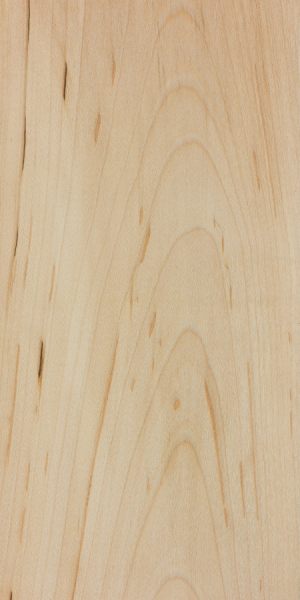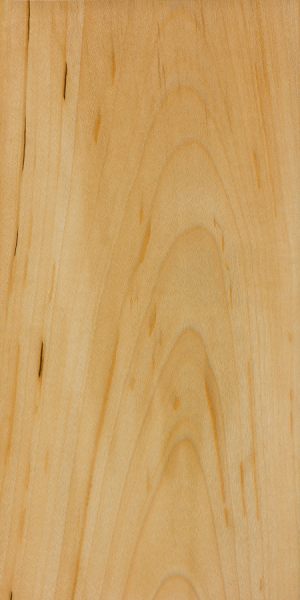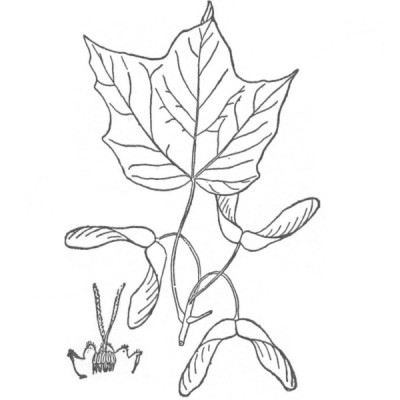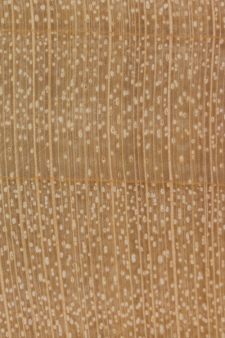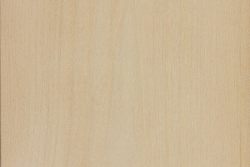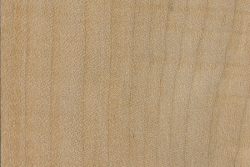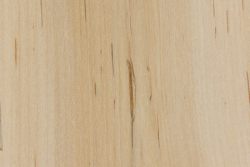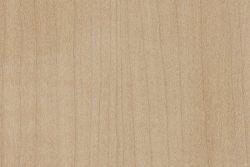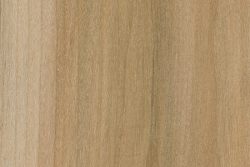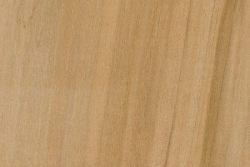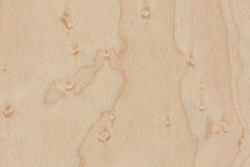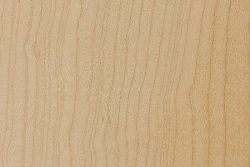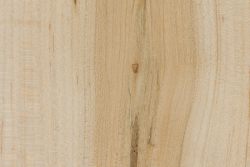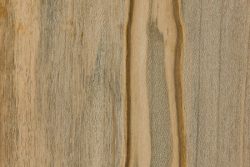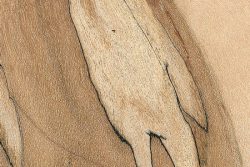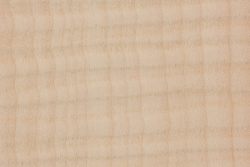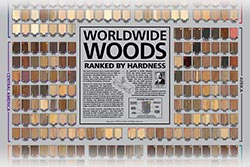> Hardwoods > Sapindaceae > Acer > nigrum
Common Name(s): Black maple, black sugar maple
Scientific Name: Acer nigrum
Distribution: Northeastern United States
Tree Size: 80-115 ft (25-35 m) tall,
2-3 ft (.6-1.0 m) trunk diameter
Average Dried Weight: 40.0 lbs/ft3 (640 kg/m3)
Specific Gravity (Basic, 12% MC): .52, .64
Janka Hardness: 1,180 lbf (5,250 N)
Modulus of Rupture: 13,300 lbf/in2 (91.7 MPa)
Elastic Modulus: 1,620,000 lbf/in2 (11.17 GPa)
Crushing Strength: 6,680 lbf/in2 (46.1 MPa)
Shrinkage: Radial: 4.8%, Tangential: 9.3%,
Volumetric: 14%, T/R Ratio: 1.9
Grain/Texture: Grain is generally straight, but may be wavy. Has a fine, even texture. The growth rings tend to be slightly darker and more distinct than in other species of soft maple.
Rot Resistance: Rated as non-durable to perishable in regard to decay resistance.
Workability: Fairly easy to work with both hand and machine tools, though slightly more difficult than soft maple due to black maple’s higher density. Maple has a tendency to burn when being machined with high-speed cutters such as in a router. Turns, glues, and finishes well, though blotches can occur when staining, and a pre-conditioner, gel stain, or toner may be necessary to get an even color.
Odor: No characteristic odor.
Allergies/Toxicity: Black maple, along with other maples in the Acer genus have been reported to cause skin irritation, runny nose, and asthma-like respiratory effects. See the articles Wood Allergies and Toxicity and Wood Dust Safety for more information.
Pricing/Availability: Should be moderately priced, though slightly more expensive than soft maple. Also, figured pieces such as birdseye, curl, or quilt are likely to be much more expensive.
Sustainability: This wood species is not listed in the CITES Appendices or on the IUCN Red List of Threatened Species.
Common Uses: Flooring (from basketball courts and dance-floors to bowling alleys and residential), veneer, paper (pulpwood), musical instruments, cutting boards, butcher blocks, workbenches, baseball bats, and other turned objects and specialty wood items.
Comments: Black maple is very closely related to hard maple, and some authors simply treat it as a subspecies of Acer saccharum. One way to tell the two trees apart is by the leaves: black maple will have three-lobed leaves with shallower notches between the lobes, (as shown below), while hard (sugar) maple will have five-lobed leaves with slightly deeper notches. Also, as its name implies, mature bark on black maple trees tends to be dark gray or almost black.
Hard maple ought to be considered the timber “king” of the Acer genus. Its wood is stronger, stiffer, harder, and denser than all of the other commercial species of maple. (Though on average, black maple tends to be ever-so-slightly lighter in weight and softer than the closely related A. saccharum.) For more information, please see the article on the Differences Between Hard Maple and Soft Maple.
Images: Drag the slider up/down to toggle between raw and finished wood.
Identification: See the article on Hardwood Anatomy for definitions of endgrain features.
Porosity: diffuse porous
Arrangement: solitary and radial multiples
Vessels: small to medium; moderately numerous
Parenchyma: banded (marginal)
Rays: both narrow and wide; normal spacing
Lookalikes/Substitutes: Can easily be confused with hard maple (Acer saccharum)—which is so similar that it is sometimes treated simply as a subspecies and can’t be separated on the basis of anatomy. (Trees can be distinguished by the leaves per comments section above.) Can be separated from soft maple species according to techniques in this article.
Notes: None.
> Hardwoods > Sapindaceae > Acer > Related species
Related Content:


